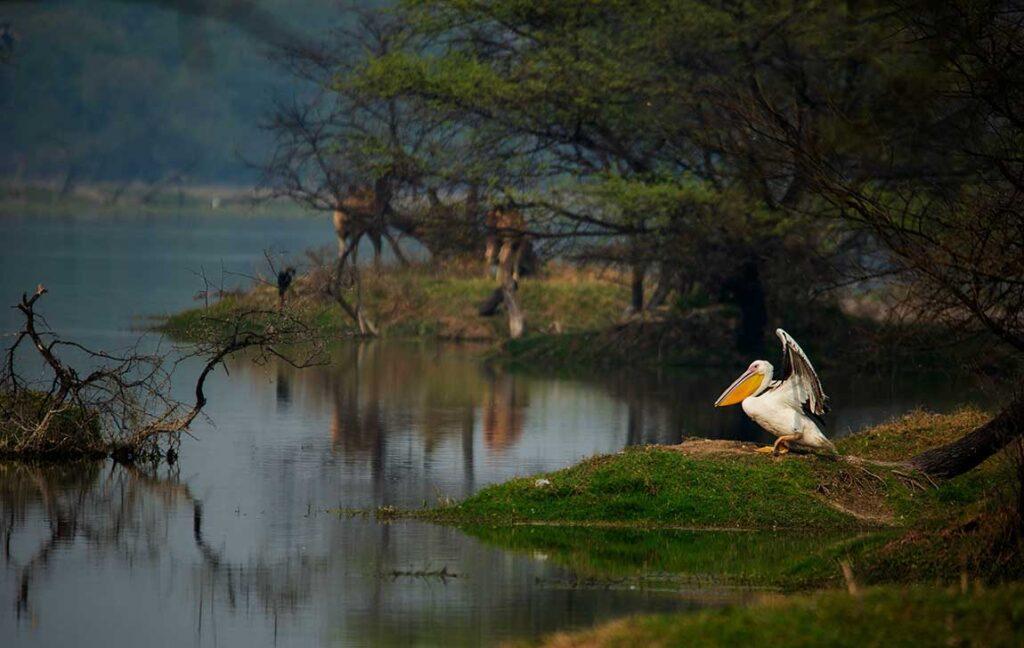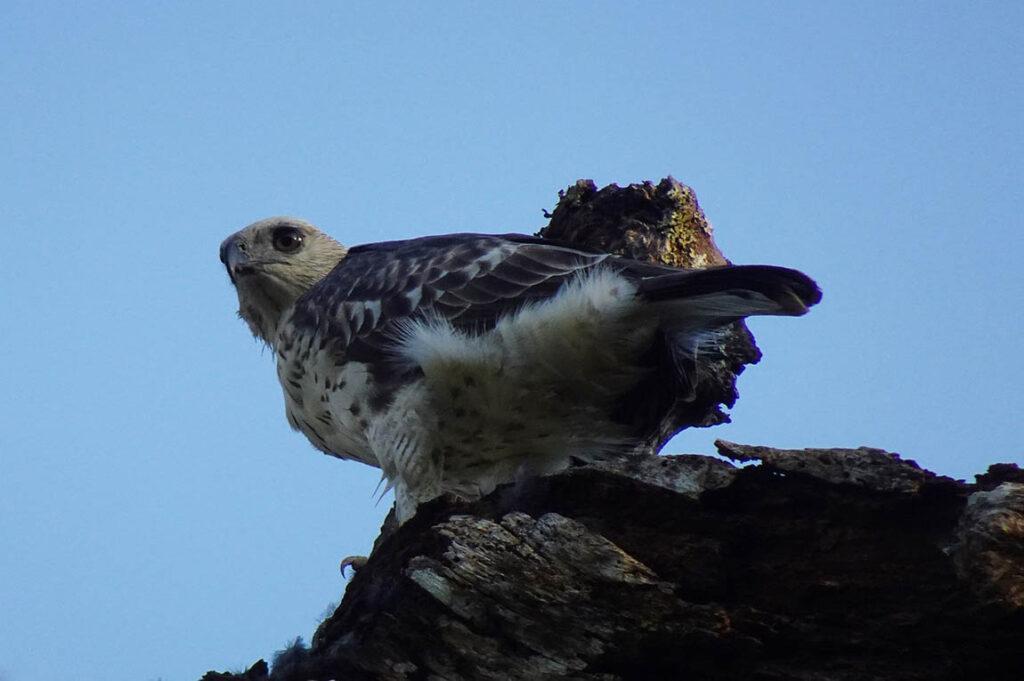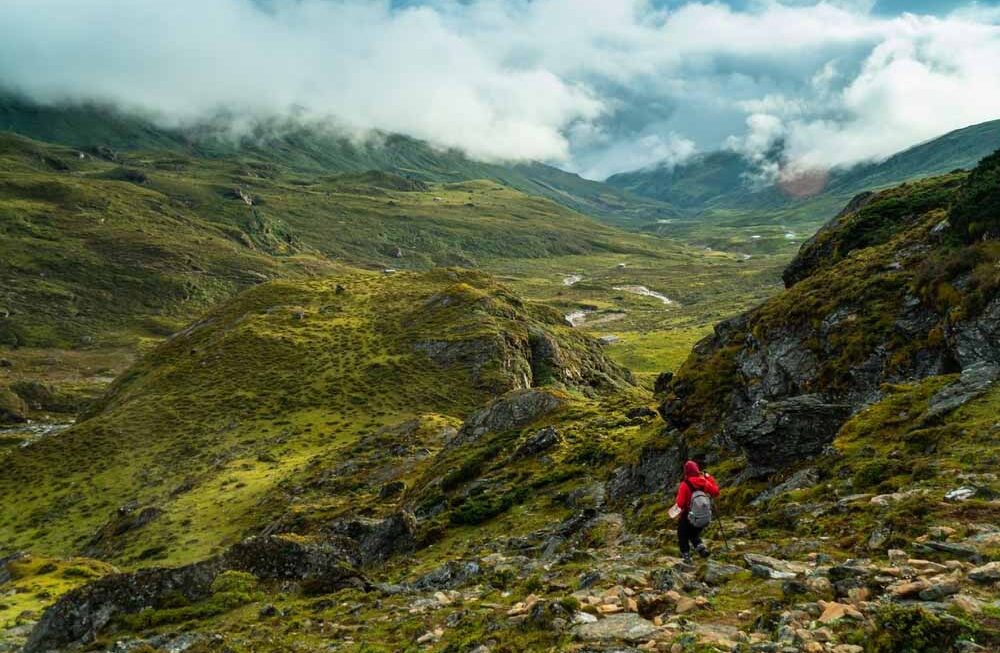Introduction
India is a treasure trove of various ecosystems and abundant wildlife, and its bird sanctuaries provide a safe refuge for a variety of avian species. These sanctuaries not only provide safe havens for birds but also provide a rare opportunity for nature lovers and birdwatchers to immerse themselves in the splendor of these feathered beauties. These sanctuaries showcase India’s tremendous biodiversity, from bright migrating birds to rare and unique species. This post will look at the top 10 best bird sanctuaries in India that are worth visiting to see the avian wonders they have to offer.
Outline of the Article

Importance of Bird Sanctuaries
Bird sanctuaries are critical to the protection of avian species and ecosystems. They provide safe havens for birds to reproduce, feed, and find refuge without being disturbed by human activity. These sanctuaries also serve to maintain the overall environmental balance by preserving the bird population, which aids in pollination, seed dissemination, and insect control. Furthermore, bird sanctuaries encourage eco-tourism and education, allowing visitors to learn about the importance of bird conservation and the importance of preserving these fragile environments for future generations.
10 Best Bird Sanctuaries in India
1. Keoladeo National Park
Location and Overview
Keoladeo National Park, originally known as Bharatpur Bird Sanctuary, is a UNESCO World Heritage Site located in the state of Rajasthan. It covers 29 square kilometers and attracts a diverse diversity of birds all year.
Species of Birds
The park has approximately 375 bird species, including rare Siberian cranes, painted storks, and many others. It is a birdwatcher’s delight, with both resident and migratory birds seen.
Information for Visitors
Keoladeo National Park has a number of walking trails and cycle paths that allow visitors to appreciate the park’s natural splendor. Local guides are on hand to provide information about the park’s avian inhabitants, making it an enriching experience for nature lovers.
2. Bharatpur Bird Sanctuary
History and Significance
Bharatpur Bird Sanctuary is a historic sanctuary in the town of Bharatpur, Rajasthan, recognized for its extraordinary avifauna. It was built as a hunting ground for the Maharajas of Bharatpur before being converted into a bird sanctuary in 1976.
Avifauna Diversity
Over 230 bird species visit the refuge each year, including the endangered Siberian crane. Egrets, herons, ducks, and raptors are among the other notable species. The marshy wetlands of the refuge provide a perfect habitat for aquatic birds.
Ecotourism Opportunities
Bharatpur Bird Sanctuary provides boat excursions and rickshaw trips, allowing guests to get up close and personal with the birds. The best time to visit is between October and February when migratory birds flood the refuge with their brilliant plumage and musical sounds.

3. Ranganathittu Bird Sanctuary
Setting and Highlights
Ranganathittu Bird Sanctuary is a cluster of small islets along the Kaveri River near Mysore, Karnataka. It is a popular breeding place for many bird species and covers around 40 acres.
Migratory Birds
Ranganathittu attracts migrating birds from all over the world, including Siberia, Australia, and North America. Painted storks, herons, spoonbills, and other birds are among them. The rich flora and quiet waterways of the sanctuary provide an ideal environment for the bird population.
Boat Safari Adventure
Visitors can go on a boat safari to explore the sanctuary’s islets and get up close and personal with nesting birds and their gorgeous offspring. The boat cruises provide an unprecedented opportunity to observe the birds in their native habitat and photograph them.
You May Also Love to Read:
Karnataka A Complete Travel Guide: Unveiling the Treasures
4. Sultanpur Bird Sanctuary
Proximity to Delhi
Sultanpur Bird Sanctuary, located approximately 50 kilometers from the hectic city of Delhi, offers a refreshing getaway into nature. This sanctuary, which covers an area of 1.43 square kilometers, provides a haven for both birds and city dwellers.
Avian Habitats
More than 250 bird species, including some migratory birds, may be seen at Sultanpur Bird Sanctuary. The sanctuary’s different habitats, including forests, ponds, and grasslands, attract a vast diversity of bird life.
Bird Watching Facilities
Visitors can observe the birds without interrupting their normal behavior thanks to the sanctuary’s well-maintained bird hides and watchtowers. There are also guided tours and nature walks offered, offering a memorable birdwatching experience.
5. Salim Ali Bird Sanctuary
Location and Scenic Beauty
The Salim Ali Bird Sanctuary, located in the state of Goa, is a gorgeous paradise for bird watchers. This mangrove environment, which covers an area of 1.8 square kilometers, is named after the renowned Indian ornithologist Dr. Salim Ali.
Endangered and rare species
A variety of birds live in the sanctuary, including rare and endangered species such as the Malabar pied hornbill and the white-bellied sea eagle. It provides critical habitat for these species and helps with conservation efforts.
Birding Season
The Salim Ali Bird Sanctuary is best visited during the winter months, from November to February. During this time, a large number of migratory birds arrive, transforming the sanctuary into a hive of avian activity.
Read More about Goa:
Unleash the Ultimate Fun: Goa Travel Guide for Adventure Lovers

6. Vedanthangal Bird Sanctuary
Oldest Bird Sanctuary in India
The oldest bird sanctuary in India is Vedanthangal Bird Sanctuary, which is located in Tamil Nadu. It was established in 1858 and encompasses roughly 74 acres. It is an important breeding place for many bird species.
Migratory and resident birds
A diverse diversity of birds, both resident and migratory, visit the sanctuary. Painted storks, pelicans, spoonbills, and other prominent species are among them. The quiet environment and rich foliage make it a haven for both birds and visitors.
Conservation Efforts
The Vedanthangal Bird Sanctuary has been instrumental in the conservation of birds and their habitats. It acts as an example for community-based conservation efforts and raises awareness about the need for natural ecosystem preservation.
7. Thattekad Bird Sanctuary
Unique Biodiversity
Thattekad Bird Sanctuary in Kerala is known for its diverse biodiversity and pristine beauty. It is also known as the Salim Ali Bird Sanctuary and encompasses an area of around 25 square kilometers. It is a birdwatcher’s paradise.
Rare Bird Species
The Sri Lanka frogmouth, Malabar trogon, and Indian pitta are among the rare and endemic bird species found at Thattekad Bird Sanctuary. Bird aficionados can spot these rare species within the sanctuary’s lush woodlands and tranquil water basins.
Bird Photography Opportunities
Photographers can find a plethora of captivating subjects at Thattekad Bird Sanctuary. The play of light and shadow, the birds’ vivid plumage, and the gorgeous backdrop of the sanctuary provide ideal locations for stunning bird photography.
You May Also Love to Read:
Explore the Beauty of Kerala Tourism: A Gateway to Paradise.

8. Kaziranga National Park
Diverse Wildlife
Kaziranga National Park in Assam is known for its diverse wildlife, including a large bird population. It is famed for its one-horned rhinoceros, but it also has a diverse bird population.
Avian Population
Over 480 bird species call the park home, making it a birdwatcher’s delight. The bird diversity of Kaziranga National Park is breathtaking, from the magnificent Bengal florican to the spectacular great Indian hornbill.
Elephant Safari and Bird Watching
An elephant safari through Kaziranga National Park provides a unique viewpoint on birdwatching. Travel through the towering grasslands and wetlands with the mahout-guided elephant, who will bring you closer to the birds for an amazing experience.
9. Nal Sarovar Bird Sanctuary
Wetland Ecosystem
The Nal Sarovar Bird Sanctuary in Gujarat is a large wetland environment that includes a lake and marshes. It is a Ramsar site with an area of more than 120 square kilometers and provides critical habitat for many migrating species.
Bird Species and Flamingo Colony
Flamingos, pelicans, geese, and ducks are among the many bird species that visit Nal Sarovar Bird Sanctuary. The refuge is well-known for its enormous flamingo colony, which attracts hundreds of these graceful birds to feed and nest.
Boating and Photography
Exploring Nal Sarovar by boat is the best way to see the birds up close. Visitors can hire boats and expert boatmen to maneuver the lake, allowing bird aficionados to take amazing photos and create unforgettable experiences.
10. Chilika Lake Bird Sanctuary
Location and Overview
Chilika Lake Bird Sanctuary, located in the state of Odisha, is a bird lover’s delight. It is India’s and Asia’s largest coastal lagoon, spanning over 1,100 square km. The sanctuary includes a large area of wetlands, islands, and shallow water.
Avian Varieties
Chilika Lake Bird Sanctuary is home to a diverse range of avian species, both resident and migratory. The refuge has documented over 160 bird species, including flamingos, pelicans, herons, and many others. These winged visitors thrive in the lake’s brackish waters and nearby wetlands.
Season of Migration
The sanctuary is busiest during the winter months, from November to February when many migrating birds arrive from far away. Thousands of birds flying to the lake are a breathtaking sight that draws birdwatchers and wildlife enthusiasts from all over the world.
Nature Walks and Boat Safaris
Exploring Chilika Lake Bird Sanctuary is possible via boat safaris that transport you through the serene waters, allowing you to get up close and personal with the birds. Guided nature walks along the lake’s banks allow visitors to observe the different birds and enjoy the tranquil surroundings.
Conservation Efforts
Chilika Lake Bird Sanctuary is not only a critical bird habitat, but it also plays an important part in the lake’s ecological conservation. Efforts have been made to safeguard the wetlands’ delicate balance, protect bird habitats, and encourage sustainable tourism.
Visiting Chilika Lake Bird Sanctuary is an enthralling experience in which you may observe the resident and migratory birds’ mesmerizing flights, vivid plumage, and beautiful calls. It is a true sanctuary for birdwatchers and wildlife lovers.
Conclusion
The bird sanctuaries in India provide an enthralling glimpse into the country’s numerous avian treasures. From the ancient Keoladeo National Park to the tranquil Nal Sarovar Bird Sanctuary, each sanctuary offers a one-of-a-kind opportunity to appreciate and conserve India’s diverse birds.
So grab your binoculars and head to one of India’s top ten bird sanctuaries. Witness nature’s avian wonders’ mesmerizing flights, brilliant colors, and melodious songs, and let nature’s avian wonders leave an indelible impact on your soul.
FAQs
Q1. Can I visit bird sanctuaries throughout the year?
- Yes, most bird sanctuaries in India are open all year. The ideal time to visit, though, is probably during the winter months, when migratory birds arrive.
Q2. Are there any restrictions on photography in bird sanctuaries?
- While photography is normally permitted in bird sanctuaries, it is critical to adhere to the rules and avoid disturbing the birds or their surroundings. Flash photography is frequently restricted in order to avoid stressing the birds.
Q3. Are accommodations available near these bird sanctuaries?
- Yes, most bird sanctuaries include nearby lodging options ranging from affordable guesthouses to luxury resorts. It is best to reserve ahead of time, especially during busy birdwatching seasons.
Q4. Can children visit bird sanctuaries?
- Absolutely! Bird sanctuaries provide children with an educational and fun experience. It gives kids the opportunity to connect with nature, learn about various bird species, and develop a respect for wildlife conservation.
Q5. How can I contribute to bird conservation efforts?
- You can help bird conservation efforts by donating to local organizations and projects that seek to protect avian habitats. Furthermore, practicing ethical birdwatching, adhering to the laws of bird sanctuaries, and raising knowledge about bird conservation are critical measures for protecting these avian beauties.












